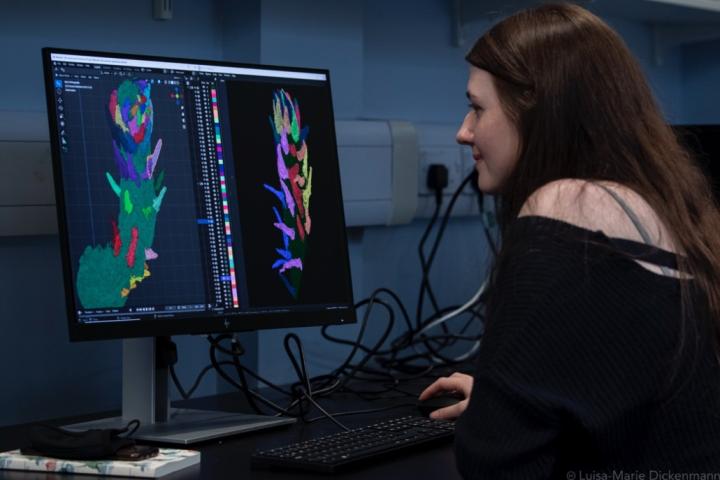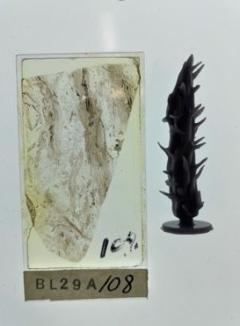Blog - Undergraduate Student Holly-Anne Unlocks Mysteries of Extinct Plants
Holly-Anne tells us about an amazing project she pursued during her honours year, which was recently published in Science!
Author: Holly-Anne Turner (Plant Science Honours Degree Alumni)
Editors: Teagen Reinart and Annis Richardson
At the end of 2020, I was beginning the fourth year of my Plant Science undergraduate degree at the University of Edinburgh. It was time to select an honours project and supervisor. After explaining that I was interested in plant evolution to my Plant Science Honours Course organiser they suggested that I get in touch with a scientist who was just starting a lab looking into land plant evolution (the Molecular Palaeobotany and Evolution Group). Dr Sandy Hetherington explained that he had a project in mind investigating the leaf arrangement of a 407-million-year-old plant, Asteroxylon mackiei, from the Rhynie Chert fossil deposit in Aberdeenshire. I could not believe my luck; being able to work with fossil specimens of one of the earliest leafy plants exceeded my hopes for an interesting avenue of plant evolution research!

To understand how plants evolved we need a good description of extinct plants like Asteroxylon mackiei. Because the fossils are parts of rock deposits, and plant tissues aren’t hard like dinosaur bones, we can’t “excavate” the plant fossil in-tact making it hard to see what the real 3D-shape of the extinct plant was like. This means that we have to take a different approach. For my honours project I digitally reconstructed a 3D model of one half of an Asteroxylon leafy shoot, creating an extremely accurate and realistic representation of this plant’s aerial shoot. I took images of 69 very thin sections called cellulose acetate peels, made in 1969 as part of the A. Bhutta Collection at the University of Cardiff, and used a computer software to align the images to create the 3D model. By analysing the model I was able to examine and quantify leaf arrangement in A. mackiei for the first time. The leaves appeared to be organised into whorls, a leaf arrangement which had never been described in Asteroxylon.

After my graduation in 2021, I was invited by Sandy to continue investigating Asteroxylon leaf arrangement as a Research Assistant. I reconstructed three complete leafy stems and created one thin section by grinding down and polishing a slice of chert to visualise leaf arrangement at the shoot apex. Overall, I analysed the organ arrangement patterns of four digital models of leafy stems, including the organisation of reproductive organs (sporangia) of one reconstruction, and four thin sections of Asteroxylon apices. Three specimens displayed whorled leaf arrangement, four specimens had their leaves organised into spirals, and one specimen documented a transition from a whorled apex to spirals of leaves around the circumference of the stem. Like the whorls, the type of spiral patterns observed and the transition between two different arrangements had not been observed in Asteroxylon leaves before. Images of these beautiful Asteroxylon stems and their leaf arrangement can be found in the published article about this research (here). Matt Humpage, a co-author of the paper, created lifelike renders of the 3D reconstructions (interactive model) as well as a great video summary of the paper (here).
It was an invaluable experience to be a student and Research Assistant in the Molecular Palaeobotany and Evolution Group. I enjoyed the reconstruction of these leafy Asteroxylon stems immensely, and there was such a great feeling of pride and satisfaction when I finally managed to understand the pattern of leaf arrangement for each specimen. This project provided me with the perfect introduction into palaeobotany, something I had never considered as a career direction before that point. This experience led me to applying for my current position as a PhD student at University College Cork researching Triassic palaeobotany and the effects of the End-Permian extinction event on ecosystems.

